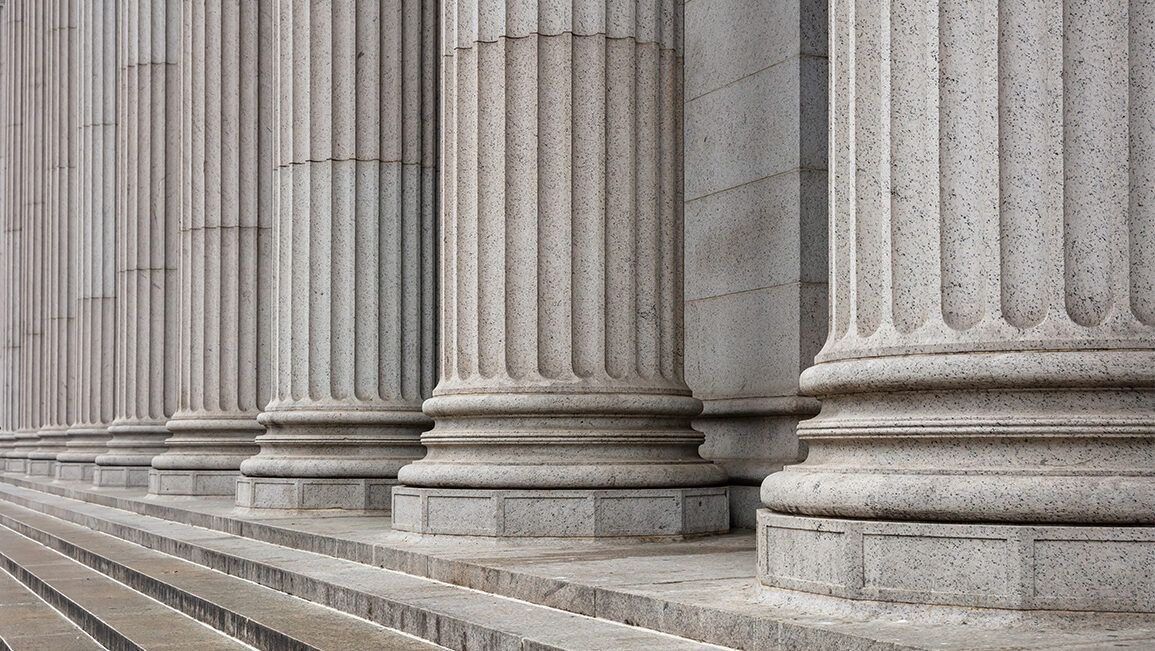May 2022 LEMR Lead Article
This article is featured in Volume 3, Number 5 of the Legal Ethics and Malpractice Reporter.
What better time than the quiet days of summer to review one of the most basic and most important sets of rules regarding lawyer behavior—rules regulating fees? Model Rule 1.5 is the basis for the regulation of fees in most jurisdictions in the United States. In this series of articles, we will go over Rule 1.5 as it has been adopted in Kansas and Missouri and explore its many complexities. Before looking at the present rule, it will be useful—and, hopefully, entertaining—to take a brief glance at the history of the ways in which American lawyers have charged clients for their work during the past several centuries.
During antiquity and the Middle Ages, lawyers were, in theory, not supposed to charge clients for the work they did for them.[1] In Rome, the reward for doing legal work was the gratitude one could expect from happy clients and the political support that was supposed to follow a successful career as an advocate. In the Middle Ages, lawyers were not supposed to charge for their services because their ability to practice as a professional was deemed to derive from professional knowledge—knowledge that was not “earned” through study and experience, but was instead a “gift of God” (“scientia donum dei est”). In fact, we know that medieval lawyers did receive fees for their services, although they were supposed to be paid only if they were successful in their representation of their clients. One major effect of these regulations of legal fees that extended into the modern period and into Anglo-American law was the prohibition against a lawyer suing a client to recover an unpaid legal fee.[2]
By the time the United States had become a nation, legal fees were a subject of some interest to state legislatures. Fundamentally, legislators were suspicious of legal fees and lawyers. Many believed legislative regulation of legal fees was necessary to prevent lawyers from charging excessive fees, which they worried would result in unequal access to courts based upon clients’ wealth and resources, and, ultimately, systemic unfairness in the justice system. (Much of this has a very “modern” sound to it, and echoes of these fears may still be heard in the language of Rule 1.5 and the Comments thereto.)
In the first decades of American history, the solution to this perceived problem was for legislatures to publish the maximum fees that lawyers might charge their clients. Given the popular suspicion against lawyers and lawyer fees, it is not at all surprising that these fees were rather low. New York, for instance, had detailed legislation that laid out the fees that lawyers could charge for various activities. These fees generally treated law work as “piece work” (i.e., lawyers were paid a specific amount for each task). The most common fee was a small amount permitted to lawyers for each “folio,” or sheet of paper, the lawyer produced in the course of a representation. This meant, for instance, that a lawyer in a normal lawsuit might be limited to a total fee of $3.75! In 2022 dollars that fee was equal to just shy of $125.
Few contemporary lawyers would consider a fee of $3.75 adequate remuneration for handling a client’s case. By today’s standards, as set out in Rule 1.5, such a fee would almost certainly be considered unreasonable”—unreasonably low. When you add in the fact that it was generally believed that a lawyer could not sue a client to recover an unpaid fee, even one as low as those set by the legislature, it becomes clear that enforcement of these early, antebellum “ethical” restrictions on lawyers’ fees was extremely problematic. The result, of course, was that lawyers and clients tended to ignore the statutory limits on fees.
The unrealistic and unreasonable statutory limits in lawyers’ fees and lawyers’ rights to sue to recover unpaid fees came before the New York courts in 1840 in the landmark case of Sevens & Cagger v. Adams, 23 Wend. 57 (1840).[3] The facts in Cagger are relatively simple. Lawyers began as attorneys and, after a period of years, became qualified as counselors as well. The lawyer in this case represented a client in an action, and they had agreed by contract that the client would pay the lawyer $300 for his services. Unfortunately for the lawyer, a statute limited the lawyer’s fee to $3.75. The client insisted that this was all he owed his counsel. The trial court found the client’s argument absurd and interpreted the statute to mean that the fee was limited to $3.75 when a party had to pay an opponent’s lawyer. But, as to fees charged by lawyers to their own clients, the statutory fee restriction was inapplicable.
Through this rather ingenious bit of statutory interpretation, statutory limitations on the fees lawyers charged to their clients were removed. Indeed, the ultimate result of this ruling was to leave the amount of fees completely to negotiation between lawyer and client. There was no limitation as to the fee charged and, therefore, there was no analogue to the modern ethical requirement that a lawyer’s fee be reasonable (or “not unreasonable” as in some states, including Missouri).
The demise of the statutory limits on fees meant that lawyers could charge whatever the market would bear for their services—and many did.
Perhaps, the most famous antebellum legal fee was that charged by Abraham Lincoln to the Illinois Central railroad. Although most Americans think of Lincoln’s pre-Presidential career as that of a simple country lawyer, the truth is that Lincoln was recognized to be one of the best lawyers in Illinois and a brilliant courtroom advocate. This enabled him to charge high fees when his clients could afford them. Lincoln was also a “railroad lawyer” involved in the lucrative practice of assisting railroads in their quests for rights of way.
One of Lincoln’s clients was the Illinois Central Railroad. In one hotly contested and politically sensitive case in which Lincoln assisted the ICR, Lincoln charged the railroad a fee of $5,000. Although certain executives of the railroad were outraged at the size of the fee, the company eventually paid up.[4] To gain some sense of just how large a fee Lincoln charged, the value of $5,000 in 2022 dollars was $187,733.12!
Although lawyers like Lincoln, Daniel Webster, and Rufus Choate (the leading American lawyers of their period) could charge enormous fees, most ordinary lawyers did not charge clients these large sums. A survey of lawyers’ fees from the years before the Civil War shows that most lawyers charged between $5.00 and $25.00 for simple trials or the preparation of legal documents.[5] Although these charges were relatively low, lawyers could live quite comfortably on them because the cost of living was also relatively low.[6]
Nineteenth century writers on legal ethics like David Hoffman and George Sharswood, although they did not focus on excessive fees in their published works, were nevertheless concerned that lawyers be cautioned not to allow greed to determine their charges. David Hoffman famously wrote in his Fifty Resolutions in Regard to Professional Deployment:[7]
Avarice is one of the most dangerous and disgusting of vices. Fortunately its presence is oftener found in age than in youth; for if it be seen as an early feature in our character it is sure, in the course of a long life, to work a great mass of oppression, and to end in both intellectual and moral desolation. Avarice gradually originates every species of indirection. Its offspring is meanness; and it contaminates every pure and honorable principle. It cannot consist with honesty scarce a moment without gaining the victory. Should the young practitioner, therefore, on the receipt of the first fruits of his exertions, perceive the slightest manifestations of this vice, let him view it as his most insidious and deadly enemy. Unless he can then heartily and thoroughly eradicate it, he will find himself, perhaps slowly, but surely, capable of unprofessional, means, and, finally, dishonest acts which, as they cannot be long concealed, will render him conscious of the loss of character; make him callous to all the nicer feelings; and ultimately so degrade him, that he consents to live upon arts, from which his talents, acquirements, and original integrity would certainly have rescued him, had he, at the very commencement, fortified himself with the resolution to reject all gains save those acquired by the most strictly honorable and professional means. I am, therefore, firmly resolved never to receive from any one a compensation not justly and honorably my due, and if fairly received, to place on it no undue value, to entertain no affection for money, further than as a means of obtaining the goods of life; the art of using money being quite as important for the avoidance of avarice, and the preservation of a pure character, as that of acquiring it.[8]
In future months we will explicate the modern ethics rules on legal fees, but as we do so it is useful to keep in mind that public and legislative concern over lawyers’ fees extends back to the very beginnings of our nation.
References:
[1] See, on the history of legal fees in the U.S., Broward, “Legal Fees Historically Considered,” 50 Am. L. Rev. 554 (1916); Kellen Funk, The Lawyers’ Code: The Transformation of American Legal Practice (PhD Princeton, 2018), esp. at 345ff.
[2] See, 3 Blackstone, Commentaries 28. Blackstone opposed permitting lawyers to sue clients to recover fees both on the basis that Roman advocates were prohibited from doing so and because lawyers were “gentlemen” and gentlemen did not sue their clients for fees.
[3] See, Funk, above n. 1 for a detailed discussion of Cagger and its context.
[4] H. Pratt, The Personal Finances of Abraham Lincoln (1943), at 49-53.
[5] See, M.H. Hoeflich, “Lawyers’ Everyday Lives in Bygone Diaries. Durably Ephemeral Perspectives on the Day-to-Day of 19th-Century American Lawyers,” Green Bag , vol. 24, no. 4 (2021).
[6] Ibid.
[7] David Hoffman, Fifty Resolutions on Professional Deportment (1836).
[8] Ibid., Resolution no. 49.
About Joseph, Hollander & Craft LLC
Joseph, Hollander & Craft is a premier law firm representing criminal, civil and family law clients throughout Kansas and Missouri. When your business, your freedom, your property, or your career is at stake, you want the attorney standing beside you to be skilled, prepared, and relentless. From our offices in Kansas City, Lawrence, Overland Park, Topeka and Wichita, our team of 20+ attorneys has you covered. We defend against life-changing criminal prosecutions. We protect children and property in divorce cases. We pursue relief for victims of trucking collisions and those who have suffered traumatic brain injuries due to the negligence of others. We fight allegations of professional misconduct against doctors, nurses, judges, attorneys, accountants, real estate agents and others. And we represent healthcare professionals and hospitals in civil litigation.













